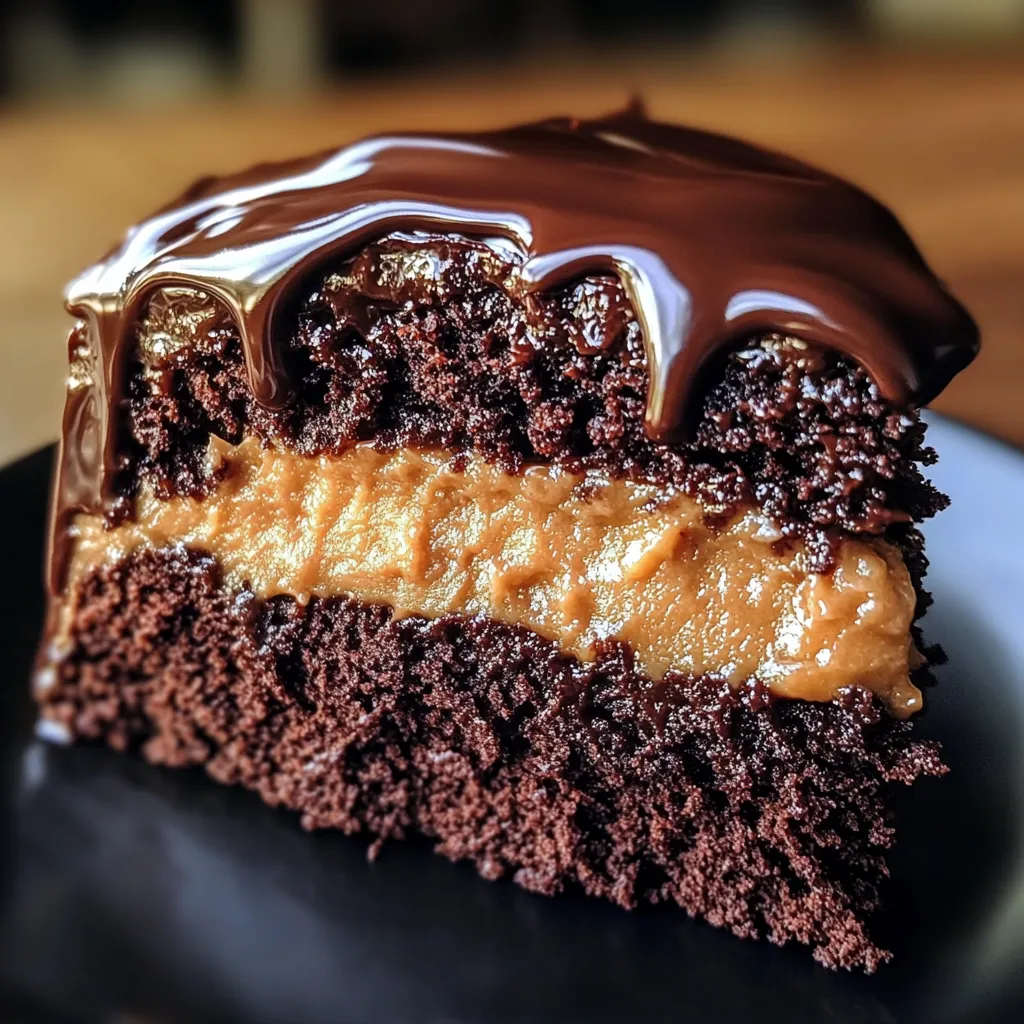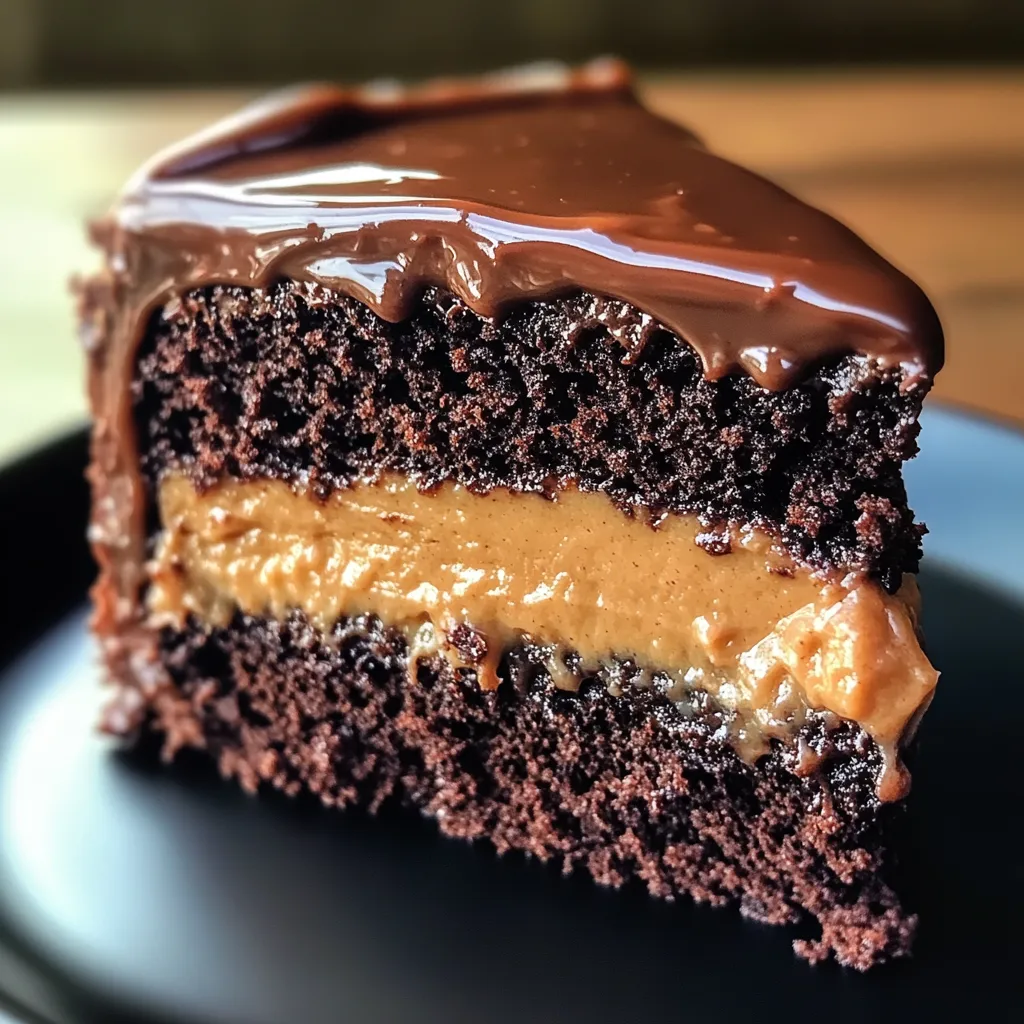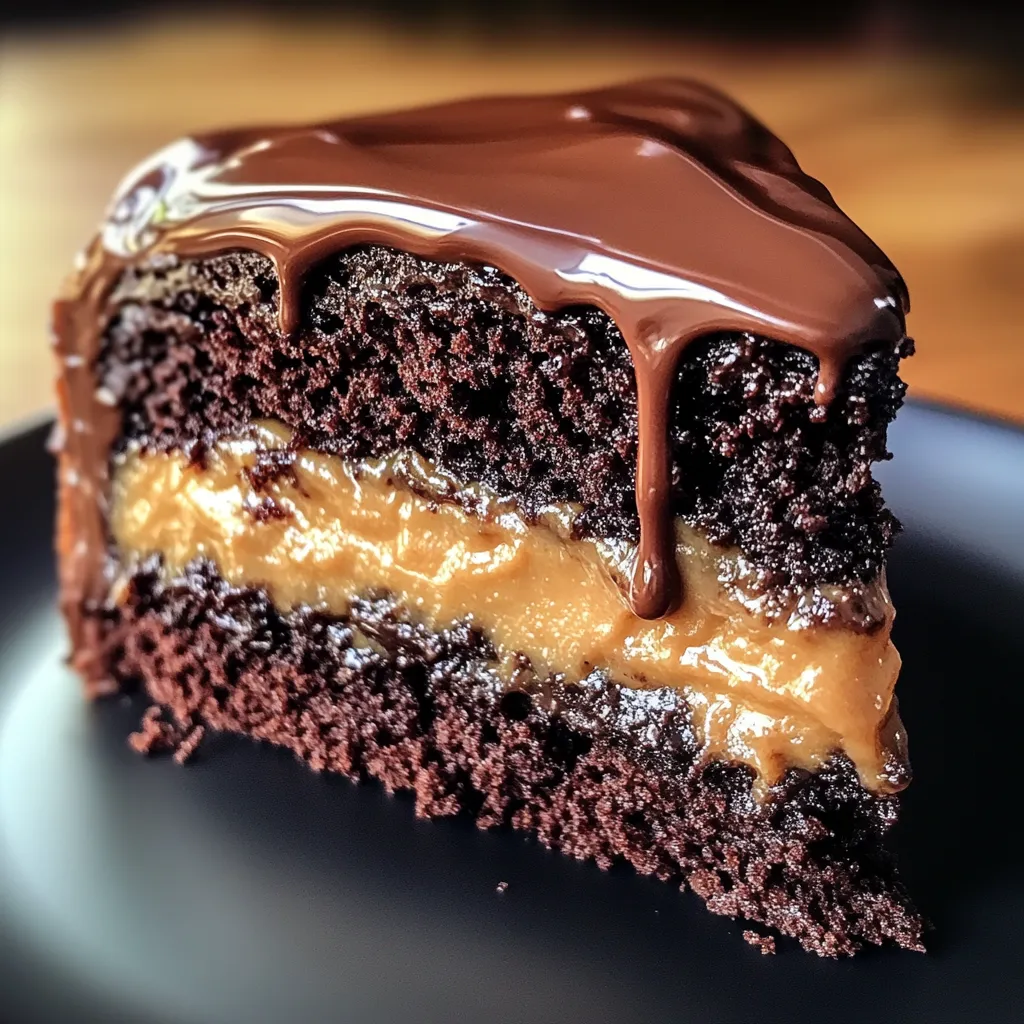 Pin it
Pin it
German chocolate cake delivers an irresistible combination of tender chocolate layers paired with a distinctive coconut-pecan frosting that creates a uniquely satisfying dessert experience. Despite its name, this iconic American creation showcases the perfect marriage of rich cocoa flavor with the sweet, nutty topping that has made it a beloved classic for generations. The contrast between the soft, moist cake and the textured, caramel-like frosting offers a multi-dimensional treat that satisfies chocolate lovers while providing something distinctly different from standard chocolate cakes.
Perfect for special occasions yet approachable enough for dedicated home bakers, this showstopper dessert combines familiar comfort with impressive presentation. What makes this cake truly special is the coconut-pecan frosting—a gooey, textural delight that transforms simple chocolate cake into something memorable and unique.
I discovered the deeper story behind this cake while researching desserts with interesting origins. What surprised me most was learning that German chocolate cake isn't German at all—it's named after Samuel German, the American who created the specific type of baking chocolate originally used in the recipe. The first time I served this cake at a family gathering, my uncle who typically avoids coconut came back for seconds, commenting that the combination somehow transformed ingredients he normally avoided into something he couldn't resist!
Essential Components
- All-purpose flour: Creates the foundation for a tender, yet structurally sound cake. Proper measuring is crucial for consistent results.
- Cocoa powder: Provides rich chocolate flavor throughout the cake. Choose unsweetened for depth of flavor and better control of sweetness.
- Baking powder and baking soda: This combination of leavening agents creates the perfect rise and tender crumb. The baking soda reacts with the acidic ingredients for added lift.
- Vegetable oil: Creates exceptional moisture that butter alone cannot achieve. The neutral flavor allows the chocolate to shine while ensuring the cake remains tender for days.
- Whole milk: Adds richness and creates proper batter consistency. The fat content contributes to the cake's moist texture.
- Eggs: Provide structure and richness to the cake while adding important binding properties. Room temperature eggs incorporate more evenly.
- Evaporated milk: Forms the base of the frosting with its concentrated flavor and creamy consistency. Don't substitute regular milk, which lacks the necessary richness.
- Coconut: Adds distinctive tropical sweetness and textural interest to the frosting. The traditional sweetened variety balances perfectly with the pecans.
- Pecans: Deliver essential nutty flavor and satisfying crunch that defines this cake's character. Toasting them lightly before adding enhances their flavor dramatically.
Creation Method
- Cake preparation:
- Begin by preheating your oven to 350°F and preparing two 9-inch round cake pans with thorough greasing and flouring, or lining with parchment paper. Precise temperature is crucial for proper rise and texture development.
- Dry ingredient combination:
- In a medium bowl, sift together flour, baking powder, baking soda, salt, and cocoa powder. This process removes any lumps while ensuring even distribution of leavening agents. Proper aeration at this stage contributes to the cake's tender crumb.
- Wet ingredient mixing:
- In a large bowl, whisk together sugar, eggs, vegetable oil, milk, and vanilla extract until completely combined and slightly thickened. The thorough incorporation of these ingredients creates the foundation for a smooth, uniform batter.
- Careful incorporation:
- Gradually add the dry ingredients to the wet mixture, stirring just until combined after each addition. Overmixing activates gluten and results in a tough cake, so fold with intention rather than beating vigorously.
- Hot water addition:
- Stir in hot water until the batter becomes thin and well-blended. This surprising step creates proper viscosity while activating the cocoa powder for enhanced chocolate flavor. The batter will appear quite fluid—this is correct and ensures proper moisture.
- Even division:
- Pour the batter evenly between prepared pans, using a kitchen scale if available for perfect balance. This ensures uniform baking and layer heights for an aesthetically pleasing finished cake.
- Careful baking:
- Bake for 25-30 minutes or until a toothpick inserted in the center comes out clean with a few moist crumbs. Avoid overbaking, which dries out the cake and compromises its characteristic moistness.
- Cooling strategy:
- Allow the cakes to cool in pans for 10 minutes before transferring to wire racks. This brief rest period allows the structure to set slightly for easier removal. Complete cooling is essential before frosting to prevent melting.
- Frosting creation:
- In a medium saucepan, combine evaporated milk, sugar, butter, and egg yolks over medium heat. Patience is crucial here—stir constantly to prevent scorching while the mixture gradually thickens. This process typically takes 10-12 minutes until the mixture reaches a golden caramel color and coats the back of a spoon.
- Texture development:
- Remove from heat and stir in vanilla extract, coconut, and chopped pecans. This creates the distinctive textural contrast between the creamy base and the chunky additions that defines German chocolate cake frosting.
- Complete cooling:
- Allow the frosting to cool to room temperature before assembling the cake. This thickening period is non-negotiable—applying warm frosting will soak into the cake rather than creating defined layers.
- Cake assembly:
- Place the first cake layer on a serving plate and spread a generous portion of frosting on top, extending just to the edges. This thick layer creates the characteristic look when the cake is sliced. Position the second layer and spread remaining frosting across the top, allowing some to naturally cascade down the sides for a rustic, traditional appearance.
 Pin it
Pin it
I discovered a wonderful variation of this recipe when preparing for a family reunion last summer. Toasting the pecans before adding them to the frosting created incredible depth of flavor that elevated the entire cake. Another successful experiment involved adding a half teaspoon of espresso powder to the cake batter, which intensified the chocolate flavor without adding coffee taste. My relatives couldn't stop commenting on how this was the best German chocolate cake they'd ever tasted, with several requesting the recipe before leaving!
Serving Ideas
Present this impressive cake on a simple cake stand that showcases its distinctive appearance. Unlike most layer cakes, traditional German chocolate cake intentionally displays the sides of the chocolate layers, with frosting only between layers and on top. This creates a rustic yet elegant presentation that lets guests appreciate both components.
When slicing, use a sharp knife dipped in hot water and wiped clean between cuts for the cleanest presentation. Serve at room temperature rather than cold from the refrigerator—allow about 30 minutes of warming time if the cake has been refrigerated. This ensures the frosting achieves its ideal texture and flavor notes.
Consider complementary beverages that enhance the experience: a cup of freshly brewed coffee balances the sweetness perfectly, while a glass of cold milk offers refreshing contrast. For adult gatherings, a dessert wine or coffee liqueur creates sophisticated pairing opportunities.
Flavor Variations
Transform this versatile cake with thoughtful adaptations that honor the original while offering new experiences. Create a mocha version by replacing the hot water with strong, hot coffee and adding a teaspoon of espresso powder to the batter. This enhances the chocolate notes while adding subtle complexity.
For coconut enthusiasts, toast half the coconut before adding to the frosting. This simple step creates varying textures and introduces caramelized notes that complement the standard coconut beautifully.
Chocolate lovers might appreciate a variation with chocolate frosting on the sides while maintaining the coconut-pecan topping between layers and on top. This creates a more formal appearance while preserving the cake's distinctive character.
For a special occasion version, add a layer of ganache beneath the coconut-pecan frosting between layers. The smooth, intense chocolate creates an unexpected luxury that elevates the entire experience.
Storage Solutions
Maintain optimal freshness by storing this cake properly at room temperature for up to three days. Cover loosely with a cake dome or inverted bowl that doesn't touch the frosting. The cake actually improves in flavor after the first day as the components meld together.
For longer storage, refrigerate in an airtight container for up to one week. The texture of the frosting will firm significantly when cold, so always allow 30 minutes at room temperature before serving for the best experience.
This cake freezes beautifully for up to three months when properly wrapped. For best results, place the unwrapped cake in the freezer until solid, then wrap tightly in plastic wrap followed by aluminum foil. Thaw overnight in the refrigerator, then bring to room temperature before serving.
For make-ahead convenience, prepare the cake layers and frosting separately up to three days in advance. Store cake layers well-wrapped at room temperature and keep the frosting refrigerated. Bring the frosting to room temperature and stir well before assembling the cake.
The German chocolate cake represents an important piece of American baking history while offering a genuinely unique dessert experience. The interplay between the soft chocolate cake and textured, sweet frosting creates something greater than the sum of its parts. I particularly appreciate how this cake breaks the rules of traditional layer cakes with its intentionally exposed sides and generous frosting only on top. It's a reminder that sometimes the most beloved recipes aren't about perfect decorating techniques but rather perfect flavor combinations. Whether served for birthdays, holidays, or simply because you're craving something special, this classic deserves its enduring popularity.
 Pin it
Pin it
Frequently Asked Questions
- → Why is it called German Chocolate Cake if it's American?
- It's named after Samuel German, an American baker who developed a specific type of dark baking chocolate for Baker's Chocolate Company in 1852, not because it originated in Germany.
- → Can I make this cake in advance?
- Yes, in fact, this cake tastes even better the day after baking. The flavors meld together nicely, and the frosting has time to set. Store covered at room temperature or in the refrigerator.
- → Can I use a different type of nut instead of pecans?
- Yes, walnuts or toasted almonds work well as substitutes. However, pecans provide the traditional flavor profile that makes this cake distinctive.
- → Why does the recipe call for boiling water?
- The boiling water helps bloom the cocoa powder, releasing more chocolate flavor and creating a thinner batter that results in a moist, tender cake.
- → Can I make this cake in two layers instead of three?
- Yes, you can bake the batter in two 9-inch pans instead. You'll need to increase the baking time by about 5-7 minutes and adjust the frosting distribution accordingly.
- → How do I store leftover German Chocolate Cake?
- Store leftover cake covered at room temperature for up to 3 days, or refrigerate for up to a week. Let refrigerated cake come to room temperature before serving for the best flavor and texture.
